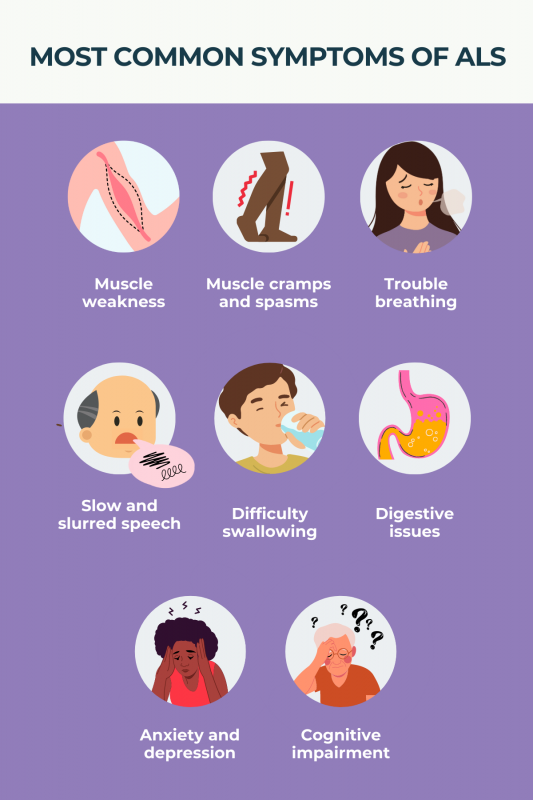FAQs about symptoms of ALS
Amyotrophic lateral sclerosis (ALS) usually progresses quite quickly, though progression is not linear and rates of progression can vary widely from person to person. Most people with ALS do not survive more than five years after the initial onset of symptoms.
The most common initial symptom of amyotrophic lateral sclerosis (ALS) is subtle muscle weakness that affects the hands and/or feet. This is usually first noticed as unusual difficulty with activities like writing or walking. Less commonly, the first symptoms of ALS can affect the muscles around the mouth and throat, most commonly manifesting as problems with speech.
Amyotrophic lateral sclerosis (ALS) is a neurodegenerative disorder characterized by muscle weakness that gets progressively worse over time. Usually, the ALS first symptoms are very mild, and then get continually more severe as the disease progresses. It is common for early symptoms of ALS to be so subtle that they are easily ignored; some early symptoms may only be noticed in retrospect.
Amyotrophic lateral sclerosis (ALS) is a progressive disorder, meaning symptoms continually get worse as time goes on. This progression isn’t usually a straight line — symptoms may rapidly worsen for a time, then stay mostly stable for a while before deteriorating again. Patients may experience some day-to-day variability in their experiences of symptoms, and there may even be times when some lost functionality is recovered, but such periods are almost always temporary and patients will eventually experience continued symptom worsening.
There is no treatment that can reverse the nerve damage that causes amyotrophic lateral sclerosis (ALS), though some available treatments may slow disease progression. There also are a number of medications and interventions, like physical and occupational therapy, that can ease specific symptoms of the disease and help patients to maximize their functionality and life quality.
Related Articles

 Fact-checked by
Fact-checked by 








